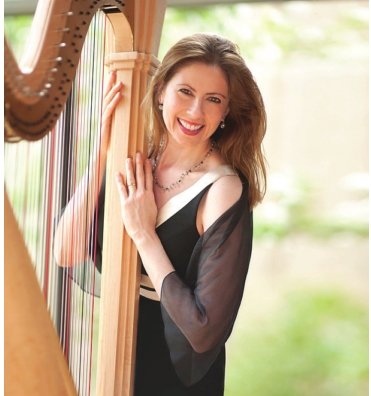Meatballs seven feet in diameter fell with juicy thuds, like chords in a Rossini overture. Airy strands of angel hair spaghetti drifted like melodies from an opera.
Oops — left the Metaphormobile in reverse. Nearly took her through the garage there!
Grkgrkgrgr-chunk. Now we’re good.
There was nothing “semi” about Rossini’s Semiramide Overture, the expansive opener of a lavish and varied Lansing Symphony concert Friday.
The meatbally chords and pasta-rific melodies were dry at first, but they mixed and thickened to a bountiful bounce under the baton of maestro Timothy Muffitt.
And what follows pasta better than lemon ice?
The event of the night, a new harp concerto by composer Jennifer Higdon, was a sweet-tart, crystalline delight, glittering with extra percussion.
Harpist Yolanda Kondonassis made it look easy.
Starting alone, she played a descending, chime-like benediction that instantly changed the air in the room. The strings gently took up the chiming motif, leaving Kondonassis to build counter-melodies that threaded through the air in crisp zigzags, like crystals on a windowpane.
The first goose bump moment came when the low brass suddenly bubbled up, as if to confirm that the wonderment in the more delicate sounding instruments was no fluke and the whole universe was involved.
The second movement was a headlong rush — and a head rush — of up-and-down scales and overlapping exclamations from all corners of the orchestra. It accelerated absurdly at the end, like a tape fast-forwarding — so fast it was hard to believe it was happening live.
The slow movement offered not only a contrast, but something new in concerto-dom — a delicate round robin of melody, using only solo instruments, like the circle of dancers in that famous Chagall painting.
Kondonassis and the soloists passed the luminous ball of melody around to each other with a tenderness that hinted at an alternative way of being human — democracy, communism and love, all at once.
There followed a bit of unexpected drama when the harpist announced that one of her strings was broken. She handed the broken string to a fan in the front row, and calmly restrung it.
The concerto ended with the most volatile ice-scape yet, an elemental fantasia frosted with bells, scrapers, triangles and other percussion. Silver slabs of sound coalesced around the harp, achieving impressive tonnage in seconds, only to be cracked apart by roiling North Sea breakers swelling from the strings and brass. The complex cross-currents kept the ear off balance and exhilarated all the way to the end. The pasta and the lemon ice were pretty filling, but there was still a massive meat course left to go.
Franz Schubert’s stentorian Ninth Symphony sounded extra uptight after the supple tapestry of the Higdon concerto.
Almost every melody in it could double as the national anthem of some obscure Central European country.
But Schubert gives you nearly an hour to settle in — more than enough time to savor Muffitt’s obvious passion for this revered classic (he didn’t even have a score in front of him) and the orchestra’s spirited, enthusiastic performance.
A pile-driving industriousness kept the epic first movement from dragging. With the dance floor firmly installed, Muffitt and company launched briskly into the march that followed, their light step underpinned by a rock-solid cadence.
This symphony holds a lot in reserve, especially for an emotionally expressive composer like Schubert, but as pure music, it’s pretty air tight. There’s no sonic gimmickry or Beethoven-ish melodrama to fall back on, so it’s all down to musicianship. A matter-of-fact mastery permeated Friday’s performance, from the section work to the solos, the tutti and even the pauses.
The gallant, genteel waltz movement made even better use of the spacious dance floor. When the finale hauled the trombones into active duty, they responded with glory. Like most big symphonies, the Ninth winds up with serial buildups and start-over-agains that threaten to try your patience, but the orchestra fleshed out Schubert’s inexorable logic with a skillfulness and verve that defied finale fatigue.
The Ninth is a pretty stolid affair, but toward the end, Schubert pulled a few tricks from his mutton chop sideburns. Round after round of jaunty, syncopated beats rolled along with zero friction, boosted at the end by sudden, roaring thrusts from the basses that made my vertebrae click into line with my amygdala.
It all felt so authoritative that for all I know, the viola players were wearing period underwear. When you know you are in sure, strong hands, you can let go and let the music carry you down the stream.
Support City Pulse - Donate Today!
Comments
No comments on this item Please log in to comment by clicking here